Game changers - Africa
Bar-raising new safari lodges have been opening across Africa, from Tanzania to Rwanda. Emma Gregg introduces us to the top spots from which to see the continent’s incredible wildlife
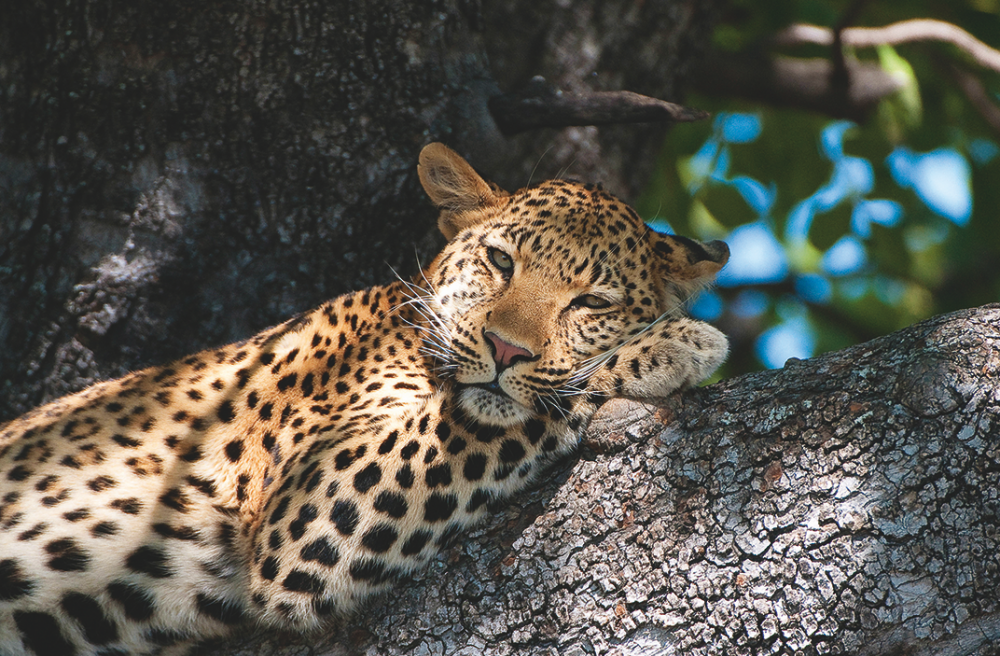
Bar-raising new safari lodges have been opening across Africa, from Tanzania to Rwanda. Emma Gregg introduces us to the top spots from which to see the continent’s incredible wildlife
Little by little, safari enthusiasts are returning to Zimbabwe. To tempt them back and attract a new generation that might never have considered this wildlife-rich nation before, top safari companies have been sprucing up the best haunts.
Chikwenya’s location, on a floodplain lapped by the Zambezi
River, has always been hard to beat, so it made perfect sense
for Wilderness Safaris to re-establish a base here. The new
Chikwenya is a contemporary take on a classic safari camp,
with seven en-suite tents decorated in soothing neutral tones;
perfect after an exciting bushwalk or river trip by boat or canoe.
Mana Pools National Park’s beautiful acacia albida groves
are browsed by the region’s celebrated elephants and patrolled
by packs of African wild dogs. Wild dogs are endangered across
southern Africa, but Chikwenya has helped boost their fortunes
by providing a large holding pen for a pack relocated from
Hwange. At the time of writing, this healthy, lively scrum of
carnivores is soon to be released back into the wild.
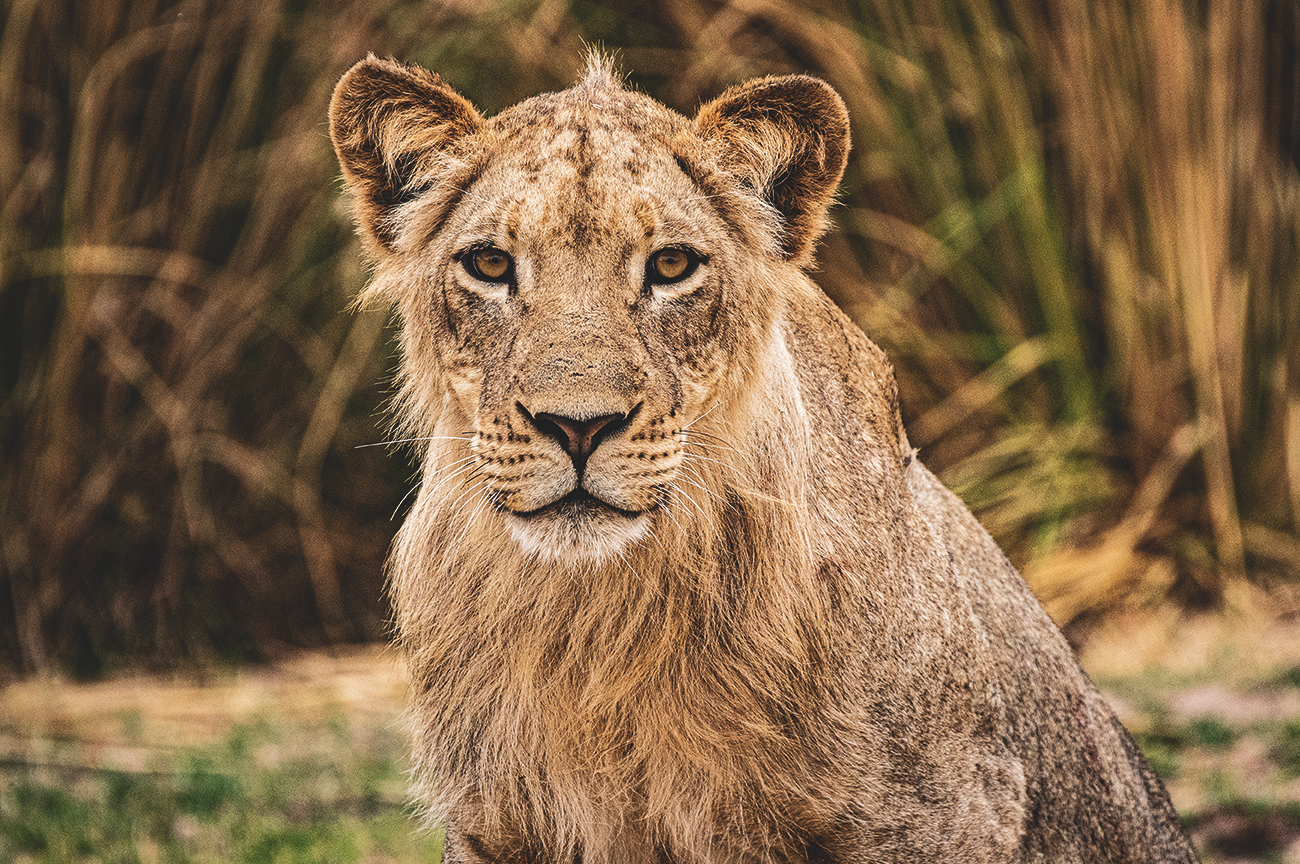
Doubles from £998pp per night sharing. Price includes all meals, twice-daily scheduled camp activities and park fees. wilderness-safaris.com
Below the great mountains of Rwanda’s Volcanoes National Park, Singita Kwitonda Lodge is an ideal stepping-off point for trekking up to see gorillas. Around one-third of the world’s endangered mountain gorillas are in the high-altitude cloud forests not far beyond the 72ha piece of land the lodge sits on.
Conservation and working responsibly with local communities is a driving force behind the project. This includes developing a buffer zone between the Volcanoes National Park and the agricultural land around it. The lodge itself has eight luxurious suites and a four-bedroom villa, each boasting a private heated plunge pool and inside and outdoor fireplaces. East African arts are used to great effect throughout the lodge, including in the central hub, with its comfortable lounge, airy dining areas, alfresco firepit bar and well-stocked wine cellar. The food celebrates traditional Rwandan cuisine and uses fresh produce grown on the site’s garden.
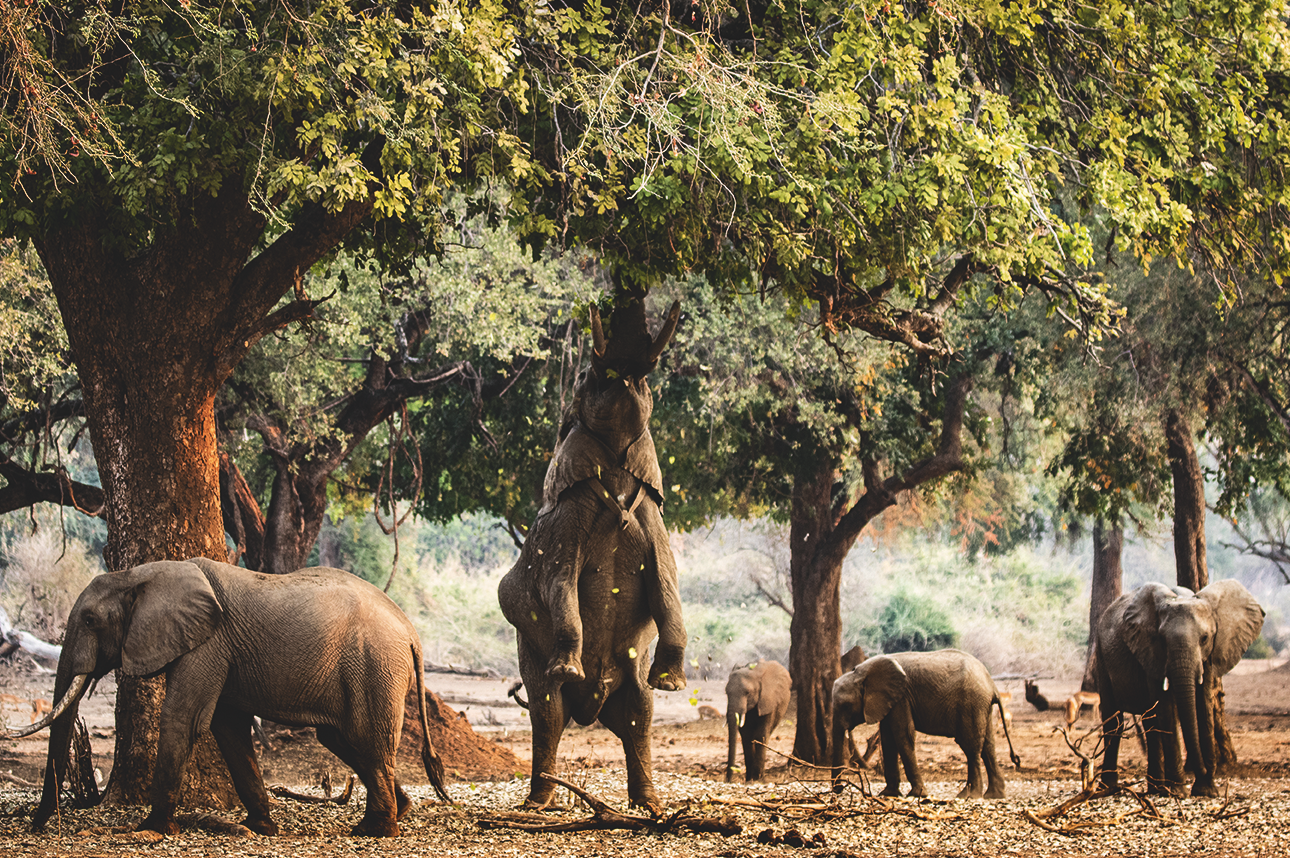
Doubles from £1,495pp per night in low season and £1,750pp per night in high season. Price includes all meals and laundry. Price excludes private vehicle and driver guide, gorilla trekking permit (£1,161pp) and transfers. singita.com
The people behind Tuludi have hit on an aspect of the safari adventure that, secretly or not-so-secretly, everyone adores: feeling like a child again. With friendly guides who do their best to answer any nature question you throw at them, the camp is modern, spacious and fun. Bright animal-print fabrics from chic South African design studio Ardmore perk up the enormous timber-and-canvas suites, which have plunge pools to splash about in and swings to relax on. The adventure-playground feel continues in the main areas with a swimming pool and rope-bannistered walkways. There’s even a slide.
Behind all this whimsy is an operation that takes service, habitat conservation and community welfare extremely seriously. Schooled in the art of taking careful but unobtrusive note of your preferences, staff will surprise you with your favourite drinks and imaginative dishes created around your preferred ingredients. The wildlife, meanwhile, is superb: Khwai, a large, quiet community-owned reserve on the fringes of the Okavango Delta, is home to elephants, big cats, wild dogs and a glorious abundance of birds.
'The wildlife-watching is superb: Khwai, a large, quiet community-owned reserve on the fringes of the Okavango Delta, is home to elephants, big cats, wild dogs and a glorious abundance of birds’
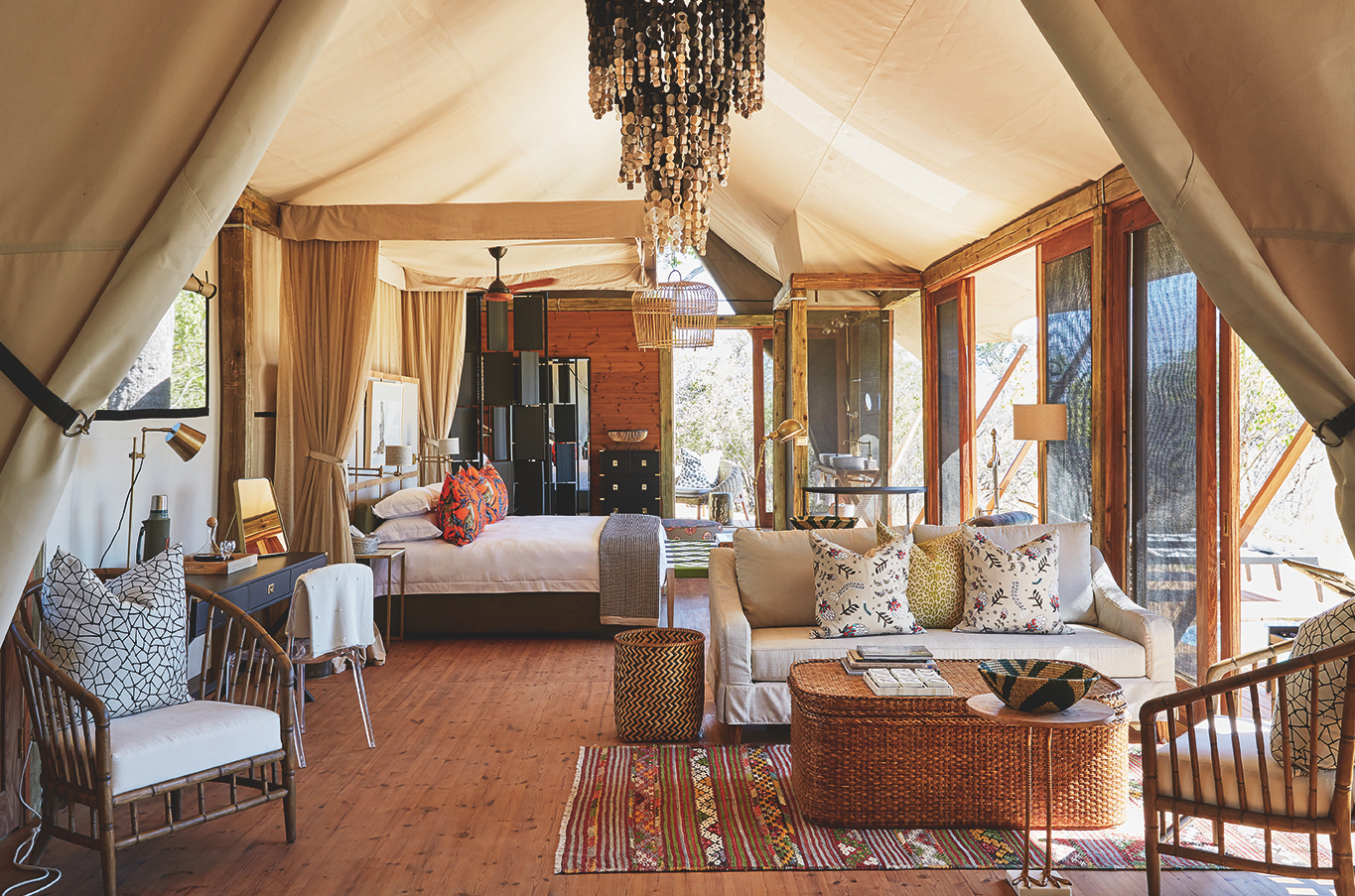
Doubles from £1,590pp per night. Price includes
all meals and beverages, laundry, daily activities, guiding and
park entry fees. naturalselection.travel
When you’re on a driving, walking and mokoro-boating trip in a wild corner of Africa, there’s only one thing better than sleeping under canvas: ditching the canvas and sleeping under a simple mosquito net instead. Drifting off to the gentle chirps of frogs, while stars twinkle brightly in the velvety black skies overhead, is a quintessential African safari experience.
African Bush Camps, one of southern Africa’s most innovative
responsible safari operators, has made wild camping a breeze
by creating beautifully unfussy safari tents, adorned with some
traditional African artefacts, plus a built-in washroom (complete
with bucket-fed shower) at one end and a gauzy gazebo at the
other. It’s here, in a comfortable bed laden with cosy quilts and
blankets, that you’ll snuggle down each night.
The company’s Linyanti Expeditions Camp is a collection of six such tents, complete with a Wi-Fi-free, canvas-shaded lounge, an open kitchen and a mess tent where everyone dines together, before sharing nightcaps and stories round the fire.
From May to October, the camp’s location is the Chobe
Enclave, a private reserve wedged between the elephant
stronghold of Chobe National Park and Namibia’s Caprivi Strip.
After that, as the dry season draws to a close, it moves south to Nxai Pan, where it’s reincarnated as Migrations Expedition
Camp – a green season base, open from December to March,
with grandstand views of Africa’s biggest zebra migration.
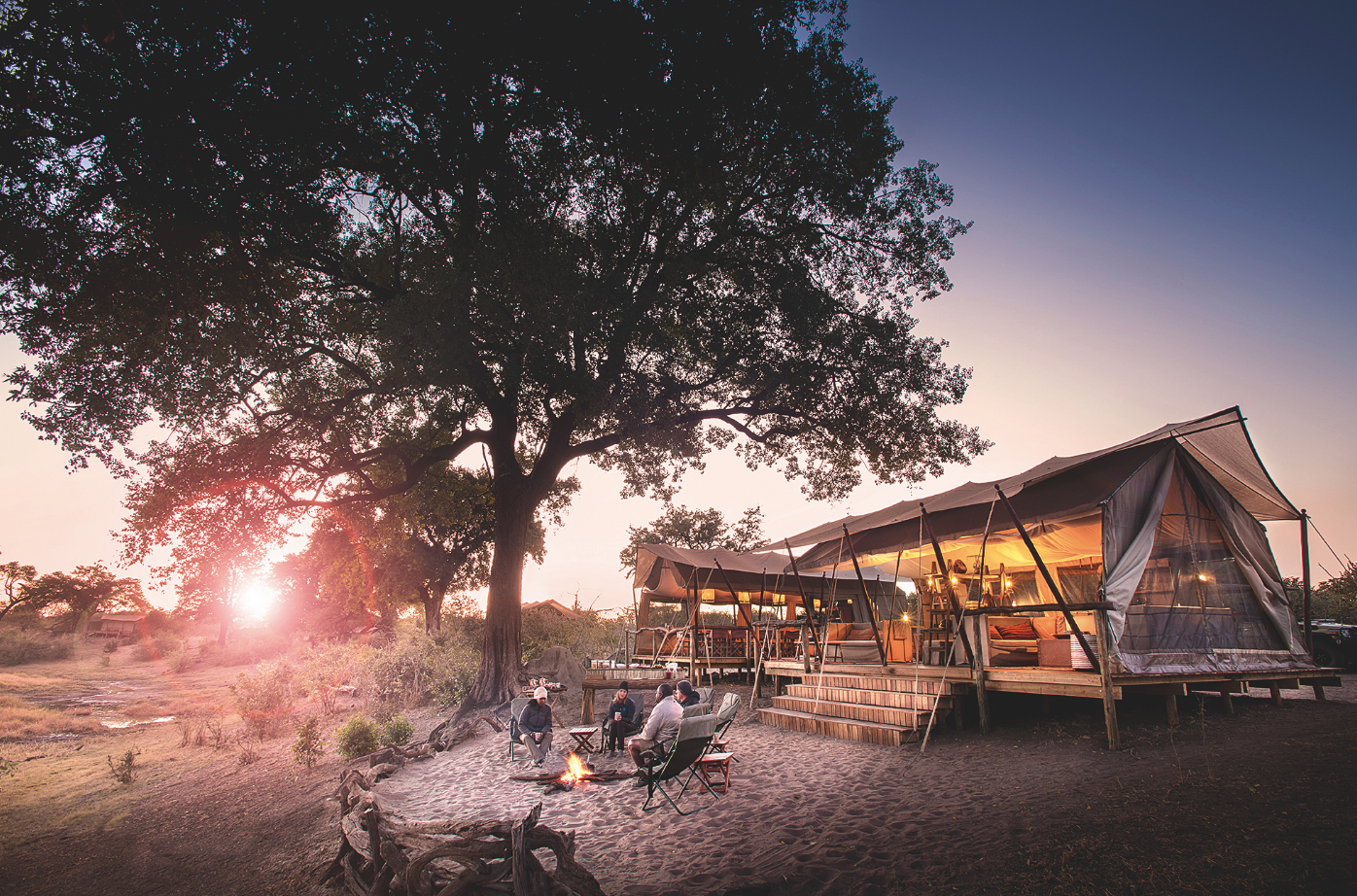
Doubles from £426pp per night in low season and £616pp per night in high season. Price includes all meals, drinks, game drives and walking safaris. africanbushcamps.com
In a dramatic swathe of arid bush adjoining Etosha National Park, Andersson’s at Ongava – formerly a mid-range safari camp – has been completely transformed. It’s now a sleek ecotourism lodge with eight contemporary suites, designed as a natural extension of the landscape. Wood, stone and an ochre-and-bone palette enriched with splashes of soft colour give it an effortlessly organic feel. Andersson’s expert guides offer excursions into the park to wildlife-watch around its famous, shimmering saltpan. They also lead nature walks within the reserve, where guests are invited to hole up in a photographic hide perfectly positioned beside a waterhole.
The facilities are superb, but what really sets Andersson’s apart is the Ongava Research Centre – the state-of-the-art successor to the camp’s on-site conservation base – which invites you to explore the wilderness through the lens of scientific discovery. There’s a visitor centre and natural history museum where guests can study and attend in-depth talks.
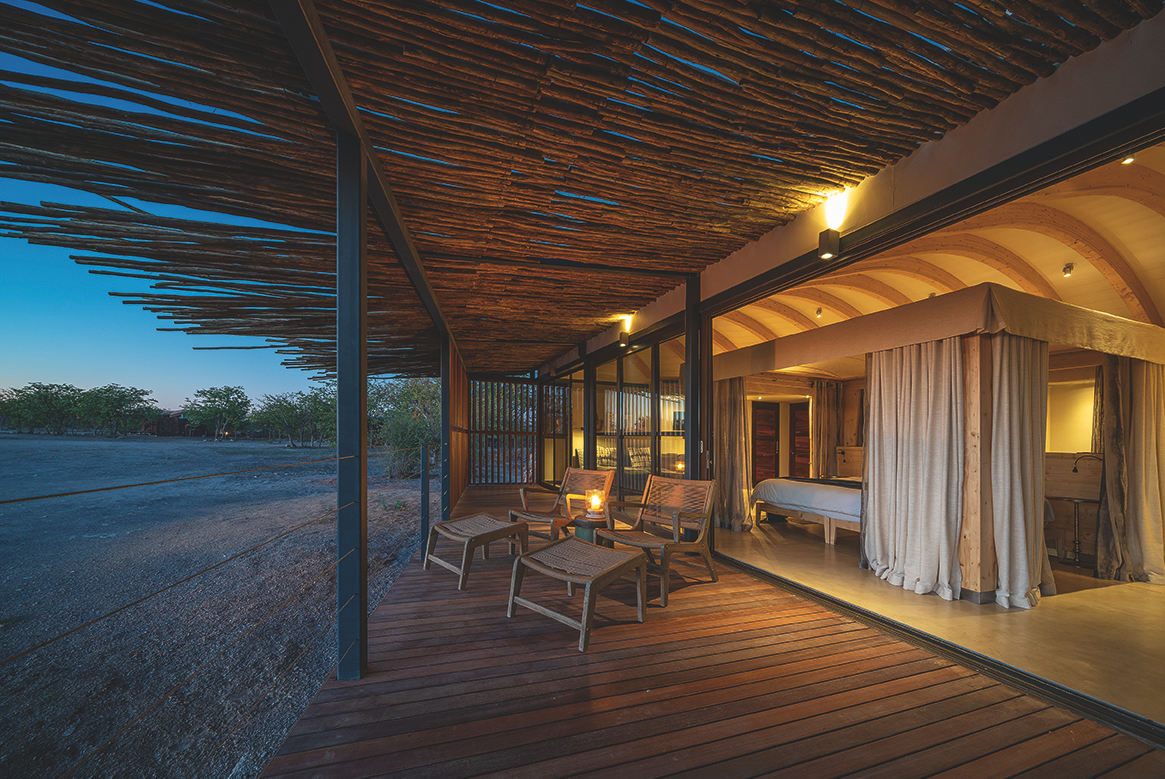
Doubles from £590pp per night in low season and £787pp per night in high season. Price includes all meals, twice-daily scheduled camp activities, park fees, laundry and local drinks. ongava.com
Such is the appeal of the Maasai Mara – particularly its more exclusive, community-owned conservancies – that the Naboisho Conservancy-based Mara Nyika’s opening weeks were almost fully booked before the first photos were released. The exemplary reputation of its founder, conservation safari company Great Plains Conservation, almost certainly helped. Dereck and Beverly Joubert, the filmmakers and photographers behind Great Plains, collaborated on the design of this intimate camp. Its four spacious timber-and-canvas tents have plenty of openings to let in the sounds and smells of the bush. There are even Canon cameras and Leica binoculars to borrow.
The surroundings, meanwhile, teem with zebras, big cats and wildebeest, and not just during the migration season for many species, which peaks between July and September, but also in the quieter green-season months of April and May, when newborn antelopes bring superb photo opportunities.

Doubles from £665pp per night in low season and £1,343pp per night in high season. Price includes park fees, vehicle activities, meals, beverages, laundry and transfers. greatplainsconservation.com
South Africa has no shortage of beautiful, eco-friendly safari camps offering superb cuisine. So what makes Noka Camp different? First of all, the design. Architect Yuji Yamazaki has raised his sleek, canvas-roofed pavilions on stilts, to keep habitat disturbance to a minimum, and added huge windows to drench Sarah Ord’s mellow interiors in light.
Then there are those jaw-dropping views of the Waterberg region. Perched on a cliff in the malaria-free Limpopo province, Noka looks out over miles of gently rolling bush. Between rhino-watching drives, boat trips and bushwalks, you can admire the panorama from your plunge pool, skybed (a bed on your private deck, for lounging or after-dark stargazing) or even bath. Crucially, its founder, Lepogo Lodges, is a not-for-profit company which, in a first for Africa, offsets the carbon emissions of every guest, including their flights, and reinvests 100 per cent of Noka’s financial gains in projects which benefit local ecosystems and communities.
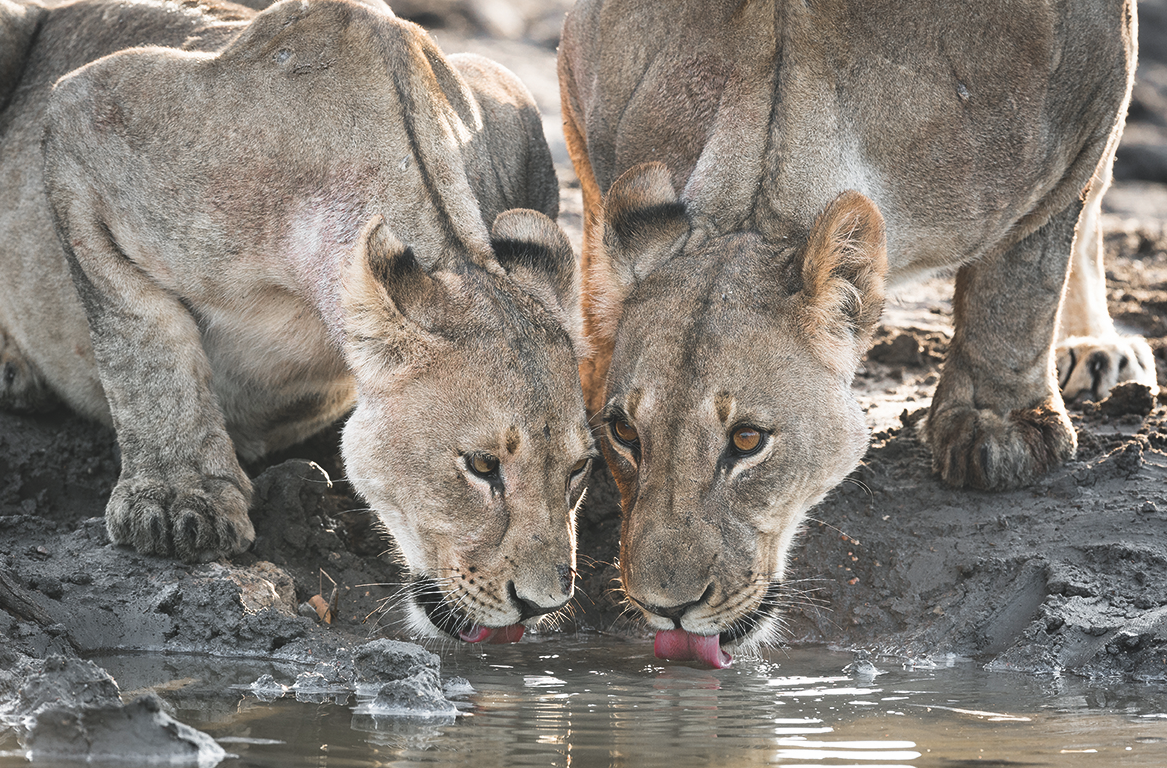
Doubles from £568pp per night for stays booked before mid-December 2019 and £872pp per night for stays booked before December 2020. Price includes meals, beverages, daily guided safaris and activities. lepogolodges.com
Tanda Tula Safari Camp is perfectly positioned among enormous trees on the banks of the riverbed, at the Klaserie Private Nature Reserve in the heart of the vast Greater Kruger National Park. This picturesque solar-powered camp of nine modern tents, each with a private deck plus indoor and outdoor shower, will have a minimal footprint and exude a vibe of ‘elegance with African roots’. tandatula.com
Relaunching June 2020, this Okavango Delta’s Moremi Game Reserve offering comes from the luxurious Red Carnation Hotel Collection. It will have 12 fully air-conditioned suites, and each one will showcase Southern African artisans and be designed to keep in tune with its surroundings. Wellness areas include a state-of-the-art gym and an inky-dark swimming pool gazing directly over the river. Service is key: there will be 105 staff looking after just 24 guests. xigera.com
Mashatu Euphorbia Villas will be the new flagship camp of the Northern Tuli Game Reserve, situated in the privately owned Mashatu Game Reserve. This five-star safari hideaway is set high up on a dramatic cliff face, revealing views overlooking the Majale River and sweeping plains below. There are a total of eight villas, each with private plunge pools, plus indoor and outdoor showers and a viewing platform. mashatu.com
Green Safaris’ newest bush camp, opening June 2020, is in the floodplains of Zambia’s Kafue National Park. The quirky accommodation is in one of four birds’ nest-shaped tree houses overlooking the far-reaching plains. Each nest is completely private, and offers a panoramic view over the terrain from both inside and on the observation deck. greensafaris.com
This North Luangwa National Park camp will open from June to October and is designed to be totally dismantled each year before the seasonal floods. A back-to-basics camp, it is built from natural materials such as mopane wood, woven palm fronds and grass, using age-old skills. remoteafrica.com
Good binoculars, a good camera with a zoom lens (plus lots of memory and batteries), electrical adapters, sunscreen, sun hat, sunglasses, lip balm and insect repellent. For clothing, it is best to take long-sleeve shirts and trousers. It can often get cold after the sun goes down.
Subscribe and view full print editions online... Subscribe